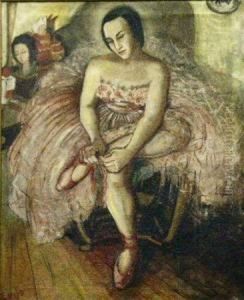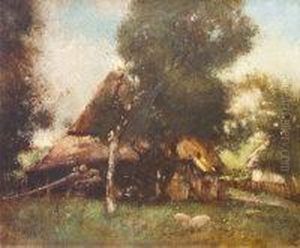Osborne Harriet O'Hagan Paintings
Osborne Harriet O'Hagan, also known as Harriet O'Hagan, was a notable figure in 19th-century Irish art, recognized for her contributions as a landscape and portrait painter. Born in 1830, O'Hagan's life spanned a period of significant cultural and social change in Ireland and throughout Europe. Despite the limited availability of formal art education for women at the time, O'Hagan managed to develop her skills and establish herself as a respected artist in a predominantly male-dominated field.
O'Hagan's early life is somewhat obscured by the lack of comprehensive records, but it is known that she was deeply influenced by the rich cultural heritage of Ireland and the dramatic landscapes of her homeland. She likely received informal training or private lessons in painting, a common practice for women artists of her era. O'Hagan's work often depicted the rugged beauty of the Irish countryside, seascapes, and occasionally, scenes from her travels abroad. Her landscapes are characterized by a detailed and realistic portrayal of nature, capturing the changing moods of the Irish landscape with a sensitive palette and skilled brushwork.
In addition to landscapes, O'Hagan also gained recognition for her portraits, which were praised for their depth of character and sensitivity to the nuances of expression and personality. She exhibited her work at various venues, including the Royal Hibernian Academy, where she was among the few women artists to gain entry in the 19th century. Despite facing the challenges of gender bias and the constraints of societal expectations, O'Hagan's talent and determination allowed her to pursue a successful career in the arts.
O'Hagan's legacy is reflective of the broader struggle and eventual recognition of women artists during her time. While she may not have achieved the same level of fame as some of her male contemporaries, her work contributes to the rich tapestry of Irish art history. Harriet O'Hagan passed away in 1920, leaving behind a body of work that continues to be appreciated for its beauty and historical significance. Her life and art serve as an inspiration for future generations of artists, especially women, to pursue their passion despite obstacles.

